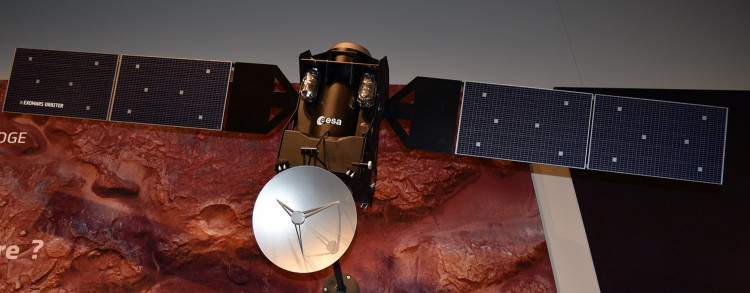The European Space Agency's ExoMars Trace Gas Orbiter has detected new gas signatures in the atmosphere of Mars. The discovery reveals new secrets about the Red Planet and will enable a more accurate determination of the presence of methane, a gas associated with geological or biological activity on the planet.
The Trace Gas Orbiter (TGO) was launched onto Mars in 2016 and has been observing the planet from orbit for over two years. Its mission is to understand the cocktail of gases found in the Martian atmosphere, with a special focus on methane, whether or not it exists on the Red Planet.
ExoMars recently spotted new gas signatures of carbon dioxide (CO2) and ozone (O3) based on a full martian year of observations by its sensitive Atmospheric Chemistry Suite (ACS). The findings have since been published in the journal Astronomy & Astrophysics detailed in two reports: one led by Kevin Olsen of the University of Oxford, UK, and another led by Alexander Trokhimovskiy of the Space Research Institute of the Russian Academy of Sciences in Moscow, Russia.
University of Oxford's Kevin Olsen called the discovery "both puzzling and surprising."
"They lie over the exact wavelength range where we expected to see the strongest signs of methane," Olsen said. "Before this discovery, the CO2 feature was completely unknown, and this is the first time ozone on Mars has been identified in this part of the infrared wavelength range."
CO2 is what mostly comprises Mars' atmosphere. The presence of ozone on the Red Planet helps to keep the atmospheric chemistry stable, similar to what O3 does here on Earth.
Both ozone and carbon dioxide have been observed on Mars by ESA's Mars Express, but the TGO was the one that was able to uncover new details about these gases' interaction with light.
Studying ozone in the range where TGO hunts for methane is a wholly unanticipated result.
Scientists have previously mapped how martian ozone can differ with altitude, and so far, this has been performed via techniques that make use of gas' signatures in the UV, a method that only allows measurement at altitudes over 20 km above the surface.
With the use of ACS, it has been proven that it is possible to map Martian ozone in the infrared as well, which means lower altitude observations can also be performed in order to create a more detailed view of this gas' role in the Red Planet's climate.
ExoMars is a joint endeavor of the ESA and Roscosmos.





